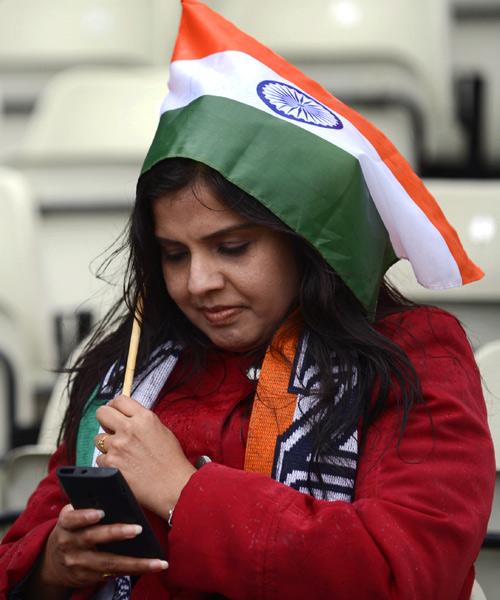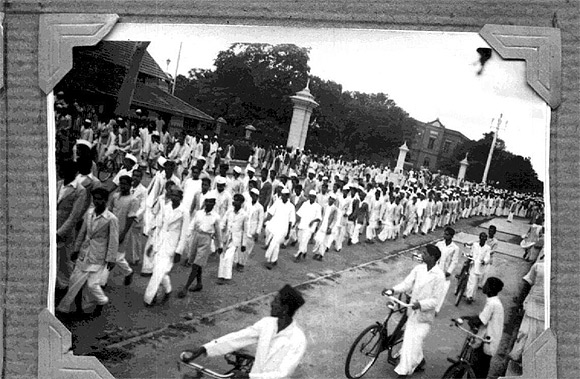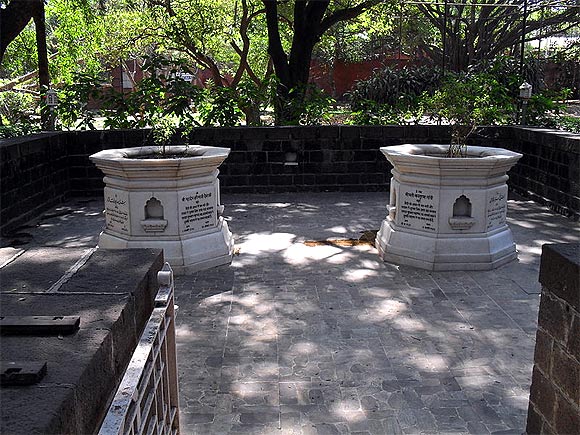 | « Back to article | Print this article |
Why August 9 is a defining moment in India's history
August 9 is the 71st anniversary of the Quit India Movement, which Mahatma Gandhi called the biggest struggle of his life.
On August 8, on the wings of one of the most powerful slogans of the freedom struggle -- 'Do or Die' -- Gandhiji gave the call for a mass movement demanding British withdrawal from India.
'Leave India to God. If this is too much then leave her to anarchy,' Gandhi had told Britain in May 1942.
While hunting for a slogan for the movement demanding the British to leave India, one suggestion was 'Get Out'. But Gandhiji thought it was impolite and rejected it.
C Rajagopalachari, whom Gandhi called as his 'conscience keeper', suggested 'Retreat' or 'Withdraw'. That too did not make the cut.
Finally, Yusuf Meheraly -- the Socialist and trade unionist who was imprisoned 8 times during the freedom struggle - came up with 'Quit India'.
Please click 'Next' to read further...
'Do or Die'
The Quit India Movement was India's final nationwide campaign for independence.
It was launched from Mumbai's Gowalia Tank on the midnight of August 8-9 after a historic session of the Congress that lasted two-and-a-half days.
Gowalia Tank was later renamed August Kranti Maidan. One of the Rajdhani trains linking Mumbai to Delhi is named after the famed August Kranti.
'There is a mantra, short one, that I give you. You imprint it on your heart and let every breath of yours give an expression to it. The mantra is "do or die",' Gandhiji told the people in his speech at Gowalia Tank.
It was a time when Japanese forces were threatening India's borders and people's frustration with the British was peaking.
Gandhiji seized this opportunity and launched a movement that united the people of India against British imperialism in a last-ditch effort.
Please click 'Next' to read further...
'Ba' died in detention in the wake of the Quit India Movement
The next day, on August 9, Gandhiji and other members of the Congress were arrested by the British and all public meetings were prohibited.
Sardar Patel, Maulana Azad, Jawaharlal Nehru, C Rajagopalachari, Dr Rajendra Prasad, Aruna Asaf Ali were some of the many freedom fighters involved in the movement.
The arrest of Gandhiji and other leaders led to mass protests throughout India.
With no national leaders left to guide the popular agitation, the movement resulted in violence and riots in several places. Strikes were called and many government buildings were set on fire.
The British ruthlessly suppressed the movement by mass detentions; more than 100,000 people were imprisoned. Thousands were killed.
Most freedom fighters were kept in prison till 1945. Imprisoned in the Aga Khan Palace in Poona along with his wife Kasturba, Gandhi was only released from prison in 1944.
It is here that Kasturba 'Ba' Gandhi died in 1944.
The palace was donated to the Indian people by the Aga Khan as a mark of respect to Gandhiji and is now a museum.
As World War II drew towards an end in 1945, Britain's place in the world had been altered and India's demand for Independence seemed inevitable.


